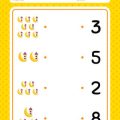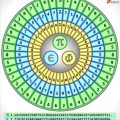1. Introduction to Tarot and Oracle Cards
Tarot and oracle cards have captured the curiosity of many people, especially in recent years as interest in spirituality and self-discovery grows across the United States. While both types of cards are used for guidance, reflection, and insight, their origins, history, and cultural significance are unique.
The Origins of Tarot Cards
Tarot cards date back to the 15th century in Europe, where they were originally used as playing cards. Over time, tarot decks became associated with mysticism and divination, especially during the 18th and 19th centuries. Today’s traditional tarot deck typically contains 78 cards divided into the Major Arcana (22 cards representing significant life themes) and Minor Arcana (56 cards reflecting daily experiences).
The Origins of Oracle Cards
Oracle cards do not have a single, fixed tradition or structure like tarot. They emerged more recently, gaining popularity in the 19th and 20th centuries. Each oracle deck is unique, with varying numbers of cards and themes—ranging from angels to animals to affirmations—depending on the creator’s vision. This flexibility has made oracle cards especially appealing to those looking for a personalized spiritual tool.
Comparing Tarot and Oracle Cards
| Feature | Tarot Cards | Oracle Cards |
|---|---|---|
| Origin | 15th century Europe | 19th-20th century globally |
| Typical Number of Cards | 78 (fixed) | Varies by deck |
| Structure | Major & Minor Arcana | No set structure |
| Themes | Traditional archetypes & symbols | Diverse, based on creator’s inspiration |
| Main Use | Divination & self-reflection | Guidance & affirmation |
Cultural Significance in the United States
Tarot and oracle cards have become increasingly mainstream in American culture. They are often seen at metaphysical shops, bookstores, yoga studios, and even major retailers. Americans use these cards for everything from personal growth to party entertainment. The appeal lies in their accessibility—anyone can pick up a deck and start exploring meanings without needing formal training.
Why Are Tarot and Oracle Cards So Popular Now?
This surge in popularity can be attributed to a collective interest in mindfulness, mental health awareness, and alternative spirituality. Social media platforms also play a role, making it easy to share card readings and connect with communities nationwide. For many people in the U.S., tarot and oracle cards offer a fun, meaningful way to reflect on life’s questions—big or small.
2. Structure and Design: Key Differences
When diving into the world of tarot and oracle cards, one of the biggest things youll notice right away is how different their structures and designs are. These differences can shape your experience with each deck, whether youre doing a reading for yourself or friends.
Tarot Decks: A Traditional Framework
Tarot decks follow a pretty strict structure that’s been around for centuries. Most tarot decks have exactly 78 cards. Here’s how they break down:
| Section | Number of Cards | Description |
|---|---|---|
| Major Arcana | 22 | These are the “big themes” cards, like The Fool, The Lovers, and The World. They represent major life events or spiritual lessons. |
| Minor Arcana | 56 | These cards are divided into four suits (usually Cups, Pentacles, Swords, and Wands), each with 14 cards (numbered Ace to 10, plus Page, Knight, Queen, and King). They focus on day-to-day situations. |
The artwork in tarot decks usually follows traditional symbolism—think medieval imagery or mystical scenes that help tell each card’s story.
Oracle Decks: Flexible and Diverse Designs
Oracle cards are much more freeform. There are no set rules for how many cards an oracle deck should have—it could be 12, 44, or even over 100! Each deck is shaped by its creator’s vision and can focus on anything from affirmations to angels to animal guides.
| Feature | Oracle Decks | Tarot Decks |
|---|---|---|
| Number of Cards | No fixed number; varies widely by deck | Always 78 cards (22 Major + 56 Minor Arcana) |
| Themes & Imagery | Diverse themes; can be modern, whimsical, spiritual, or nature-based—anything goes! | Often rooted in traditional symbolism; consistent suits and archetypes |
| Structure & Rules | No set structure—each deck is unique to its author’s inspiration and message style | Consistent structure across most decks; similar card meanings no matter the design |
The Look and Feel: Personal Expression vs. Tradition
If you love consistency and tradition, tarot might be your go-to—it feels a bit like learning a new language with defined grammar rules. If you prefer something more intuitive or personalized, oracle decks let you choose a style and vibe that matches your personality or current mood.
![]()
3. How They Are Used: Readings and Practices
Both tarot and oracle cards are widely used in the United States for self-reflection, guidance, and even entertainment. While their roots come from different traditions, modern American practices often blend various styles, making readings accessible and enjoyable for everyone. Let’s look at how people commonly use these decks and explore some popular reading approaches.
Popular Uses in Everyday Life
- Self-Reflection: Many Americans draw a daily card to gain insight into their emotions or challenges.
- Decision-Making: People often consult the cards when facing choices about relationships, careers, or personal goals.
- Meditation and Mindfulness: Tarot and oracle cards are sometimes used as prompts for journaling or meditation sessions.
- Group Activities: At parties or gatherings, card readings can be a fun way to spark conversation and connection.
Reading Styles and Approaches
| Reading Style | Description | Commonly Used With |
|---|---|---|
| Intuitive Reading | Focuses on gut feelings and personal interpretations rather than strict meanings. | Oracle Cards & Tarot Cards |
| Traditional Spread Reading | Uses set card layouts (spreads) with established meanings for each position. | Mainly Tarot Cards |
| Themed Guidance Reading | Selects cards to answer specific questions, like “What should I focus on today?” | Mainly Oracle Cards |
| Storytelling Approach | Tells a story using the images and messages from multiple cards drawn together. | Both Decks |
Popular American Spreads and Layouts
The Three-Card Spread (Tarot & Oracle)
This classic spread is simple and effective. In the U.S., it’s often used to explore:
- Past – Present – Future: Understand how past events influence current situations and future possibilities.
- Situtation – Obstacle – Advice: Get clarity on a challenge and actionable advice.
The Celtic Cross (Mostly Tarot)
This ten-card spread is very popular among American tarot readers. It provides a detailed overview of a situation, including external influences, hopes, fears, and potential outcomes.
The Single Card Draw (Tarot & Oracle)
A quick way to get guidance for the day or an answer to a straightforward question. This style is especially popular for daily readings or quick check-ins.
Other Everyday Applications
- Affirmation Pulls: Drawing an oracle card to receive a positive affirmation for the day.
- Email or App Readings: Many Americans use digital platforms to get instant card readings online or via mobile apps.
- Creative Inspiration: Writers and artists sometimes use tarot or oracle cards to break creative blocks or inspire new ideas.
4. Similarities and Overlapping Benefits
Shared Characteristics of Tarot and Oracle Cards
While tarot and oracle cards each have their unique systems and histories, they share several core similarities that make them popular tools for personal development in the United States. Both card types are designed to help users reflect on their lives, find inspiration, and encourage personal growth. Whether you’re pulling a card during your morning routine or using them in a group setting, tarot and oracle decks can fit seamlessly into modern wellness practices.
Common Purposes: Self-Reflection, Inspiration, and Growth
At their heart, both tarot and oracle cards serve as mirrors for our thoughts and feelings. People use these cards to explore questions about their lives, gain new perspectives, and spark creative ideas. Here’s a quick comparison of how each type supports similar goals:
| Purpose | Tarot Cards | Oracle Cards |
|---|---|---|
| Self-Reflection | Structured archetypes prompt deep personal insights | Open themes encourage intuitive exploration of feelings |
| Inspiration | Symbolic images invite creative interpretations | Uplifting messages offer encouragement and motivation |
| Personal Growth | Guides self-discovery through traditional narratives | Flexible guidance adapts to individual needs and goals |
The Role of Card Readings in Modern Wellness Culture
Across the U.S., more people are turning to holistic wellness tools to support mental health and mindfulness. Tarot and oracle cards have found a place alongside meditation apps, journaling, and yoga as accessible resources for self-care. Many Americans appreciate the ritual of drawing a daily card for focus or affirmation—making these decks a valuable part of their emotional wellness toolkit.
How They Fit Into Everyday Life
- Mental Health Support: Using cards as prompts for journaling or meditation sessions.
- Group Activities: Sharing readings with friends at gatherings or retreats.
- Personal Rituals: Starting the day with a single card pull for intention-setting.
- Counseling Tools: Therapists may incorporate card draws to open conversations about feelings or life choices.
No matter which deck you choose, tarot and oracle cards offer similar benefits by helping people pause, reflect, and connect with themselves in meaningful ways.
5. Choosing the Right Deck for You
Selecting a tarot or oracle deck is an exciting and personal journey. In the United States, there are countless options that reflect the country’s diversity and creative spirit. Here are some practical tips to help you pick a deck that feels right for you, with special attention to American cultural values and resources.
Consider Your Purpose and Connection
Start by thinking about why you want a deck. Are you interested in self-reflection, meditation, or perhaps connecting with your heritage? Tarot decks follow traditional structures and symbolism, while oracle decks offer more flexibility and creative themes. Hold a sample deck in your hands if possible, or look at detailed images online—see if the artwork and symbolism resonate with you on a personal level.
Inclusivity and Representation
America is known for its multiculturalism, so inclusivity in card imagery matters to many people. Look for decks that feature diverse representations of race, gender, body type, age, and culture. This can make readings feel more relatable and affirming for everyone.
| Deck Type | Common Features | Examples of Inclusivity |
|---|---|---|
| Tarot | 78 cards, traditional suits and archetypes | Diverse Rider-Waite clones, LGBTQ+ themed decks |
| Oracle | Flexible number of cards, unique themes | Culturally specific decks (African American, Latinx), feminist decks |
Support Local Creators and Shops
The U.S. has a vibrant community of independent artists and small businesses creating unique tarot and oracle decks. Purchasing from local creators supports their work and fosters community connections. Many metaphysical shops in cities like New York, Los Angeles, Austin, or Portland host events where you can browse decks in person. Shopping locally also helps you avoid counterfeit products often found on large online marketplaces.
Resources to Explore:
- Local Metaphysical Stores: Visit shops in your area for hands-on experience.
- Etsy & Indie Websites: Find American-made indie decks directly from creators.
- Community Events: Attend fairs or workshops to meet makers and try out different decks.
- Social Media Groups: Join U.S.-based tarot communities on Facebook or Instagram for recommendations.
Your Personal Style Matters
Your deck should reflect your personality and interests. Maybe you’re drawn to classic art styles, pop culture themes, or nature-inspired designs—there’s something out there for everyone. Don’t be afraid to choose what feels authentic to you rather than what’s most popular.
Quick Tips for Choosing Your Deck:
- Browse through sample images online before buying.
- If possible, touch the cards in-store to see how they feel.
- Select a guidebook style that matches your learning preference (detailed vs. intuitive).
- Trust your gut—if a deck excites you or feels comforting, it’s likely a good match!
Remember: The best deck is the one that speaks to you personally while honoring your values and interests within the rich tapestry of American culture.


